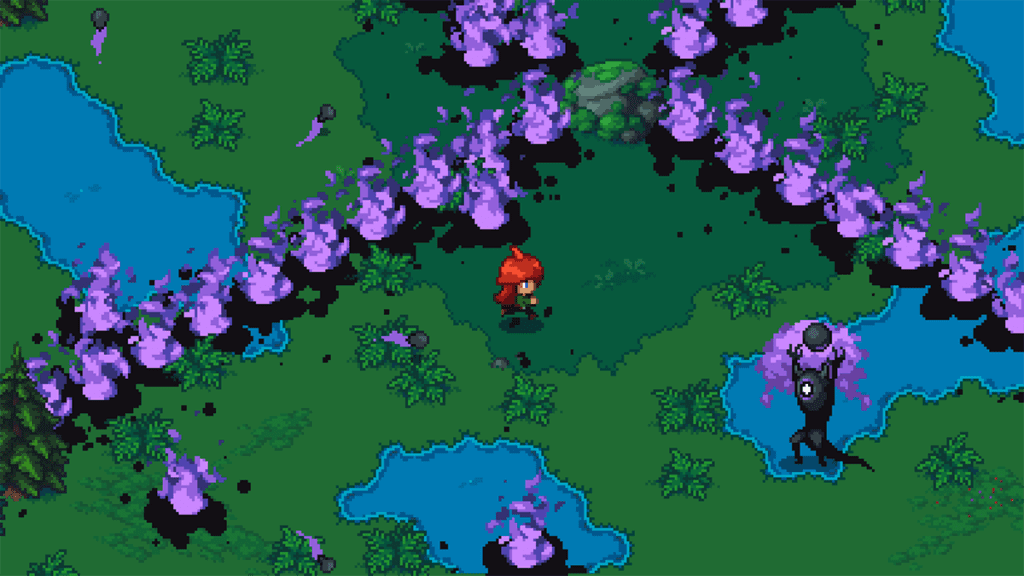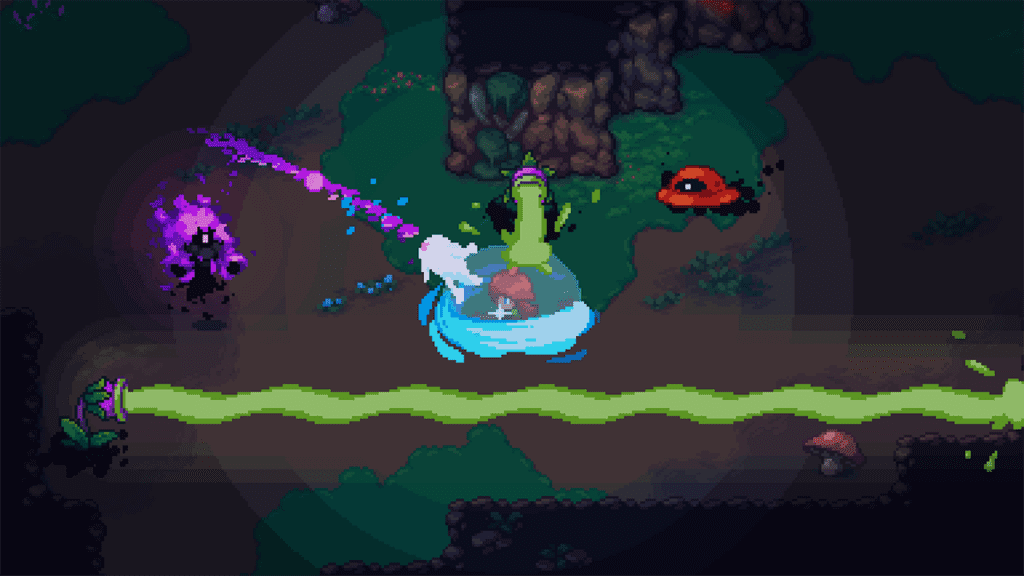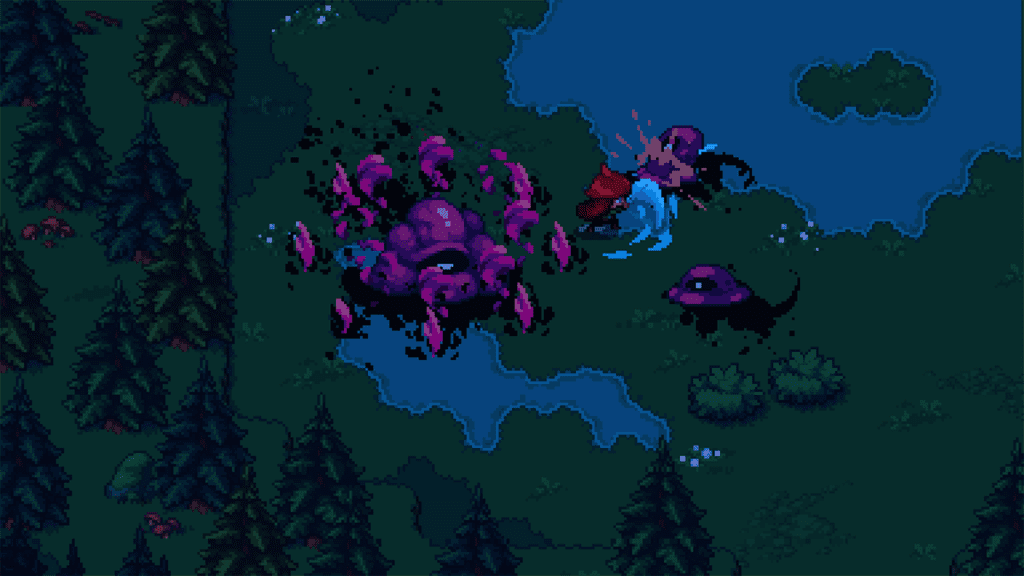Arietta of Spirits
Arietta of Spirits is a love letter to The Legend of Zelda: Link to the Past. The game starts in the Zelda mold, but by the end adds a few new ideas to the genre. Third Spirit Games, a Finnish three-person studio, developed Arietta. The size of the studio reflects the scope of the game. Unfortunately, the creative ideas introduced come late into the game and leave the early game feeling thin. Overall, Arietta of Spirits creates a short, yet satisfying experience that leaves the player wanting more.

Developer: Third Spirits Games
Publisher: Red Art Games
Release Date: August 19, 2021
The ability of Third Spirit Games‘ three-person team to create and finish the game provides context for the experience. Arietta is a small game in scope, but it is personal in nature. Samuli Siimesto did the story, music, and sound design. Kimmo Bordi programmed the game. And Matti Ervasti created charming pixel art. The commitment and care in the story and the design carry the game, but also set expectations for the experience. The game world is small. The enemies are underpopulated. And while the game mechanics are not as precise as they could be, the gameplay and story are more than a Zelda clone.

Gameplay
Arietta of Spirits opens in the traditional 2D Zelda style. A short introductory quest introduces the mechanics of attack and roll. Hearts represent the life meter and bushes hide hearts to refill it. The island overworld is a series of connected screens with occasional underground caves. The single programmer, Kimmo Bordi, deserves credit for keeping the game flowing. As the game progresses, an additional shield bubble is available and greatly adds to the gameplay. The shield bubble stuns enemies, absorbs projectiles, and reflects some attacks. This diversifies the combat and creates challenging encounters. Unfortunately, though, this enjoyable mechanic comes late in the game.
Story / Plot
The slower pace of early game exploration and combat fit with the story. Arietta and her parents visit her Grandmother’s cabin on a small island. Her Grandmother recently died and Arietta’s and the family’s grief plays an appropriate role in the story. The isolation of the island works to justify the limited density and variety of enemies. The story unfolds as Arietta learning that she is connected to the spirit realm. Siimesto’s story is heartfelt. Occasional tender and touching moments occur between Arietta, her spirit companion, and the characters she meets. Ultimately, the small personal stories Arietta of Spirits tells narratively justify the game’s scope and gameplay mechanics.

Graphics and music
It is fair to set realistic expectations with Arietta of Spirits. Matti Ervasti’s pixel art is sharp and charming. The lack of variety is more a result of appropriate scoping than a creative limitation. Characters animate well. Enemy attacks are telegraphed clearly to provide the player the opportunity to counterattack or dodge. The atmosphere underground is isolating. Samuli Siimesto created calm and tranquil music that matches the exploration of the island. Boss battle music ratchets up the intensity and creates a sense of unease. Some of the sound effects are direct callbacks to Zelda, but they fit the setting.
Concerns
While the character moves fluidly throughout the map, unfortunately, this fluid control is not extended to combat. The attack animations occur in cardinal directions and do not allow for diagonal attacks. This results in occasional missed attacks if not lined up correctly. Over time, the spacing and direction of successful attacks are learned. But missed attacks due to alignment often result in loss of hearts. While this concern was also present in 16-bit Zelda games, it results in occasionally stiff gameplay.
Arietta of spirits
Arietta of Spirits is a limited game that achieves what it wants to be. Some design choices limit the combat but ultimately creates a satisfying flow. The heartfelt story contains more depth than a sparsely populated overworld. While the $15 price point might be a little high, but the creative achievement of this three-person team should be celebrated.
